Best Wi-Fi 6E router 2025
The ROG Rapture is the ultimate Wi-Fi 6E pick, but there are plenty of other options if you're looking to upgrade.
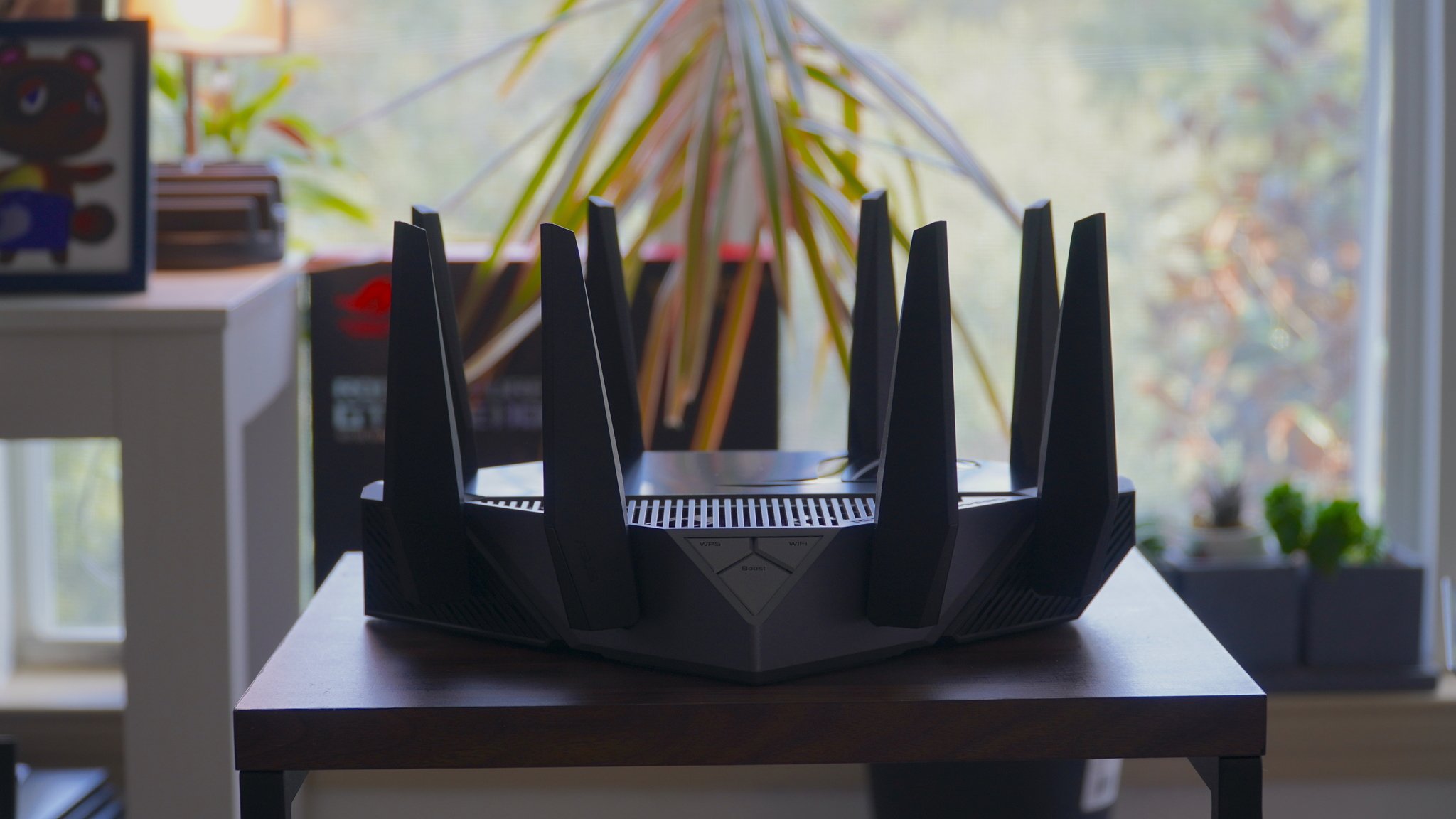
1. At a glance
2. Best overall
3. Best value
4. Upgrade pick
5. Best mesh system
6. Best value mesh
7. Standout design
8. Ultimate upgrade
9. Best compact mesh
10. FAQ
Wi-Fi 6E is the evolution of Wi-Fi 6 that offers improved speeds in congested areas, and the best Wi-Fi 6E routers include benefits that can be used by older devices. Wi-Fi 6E utilizes the 6GHz spectrum to enable more consistent speeds in congested areas than was possible at 5GHz. If your devices are ready for Wi-Fi 6E or you just want to be ready for the next generation, these routers all offer impressive 6GHz performance. The best Wi-Fi 6E router will offer speed upgrades for newer devices without compromising performance on older 5GHz devices.
If you're looking to upgrade, the ASUS ROG Rapture GT-AXE11000 is one of the fastest routers ever made, with plenty of speed for both Wi-Fi 6E devices and older devices. With full RGB lighting, this router's gaming roots are evident, but that also means this router is packing great optimization software and comes with a gaming-optimized 2.5Gbps Ethernet port.
The Linksys Hydra Pro 6E is another solid option with a more subtle design and a lower price. This AXE6600 router gives up some speed for older devices but supports a full 4804Mbps on the 6GHz band. This is a great router to try out Wi-Fi 6E but will fall short when it comes to the 5GHz Wi-Fi 6 bandwidth — it isn't as good as some of the other routers.
After extensive testing, we've rounded up the best Wi-Fi 6E routers currently available in the market. Wi-Fi 7 is on the horizon, and while there are a few routers available, it's still not mainstream yet, and there are limited client devices to take advantage of the tech. In that context, Wi-Fi 6E is still a great option in 2024.
At a glance
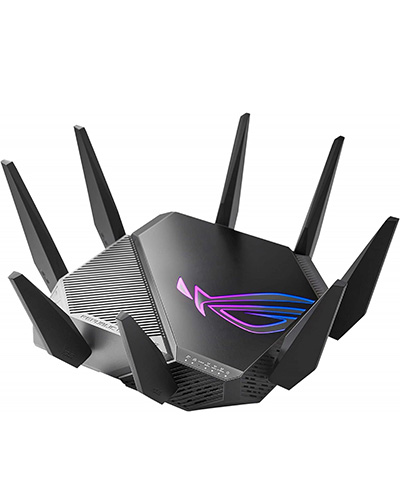
Best overall
The ROG Rapture GT-AXE11000 is one of the fastest routers ever made, and devices can access more of that speed than ever thanks to 6GHz Wi-Fi. This router also supports fast 5GHz Wi-Fi 6 devices with 160MHz.
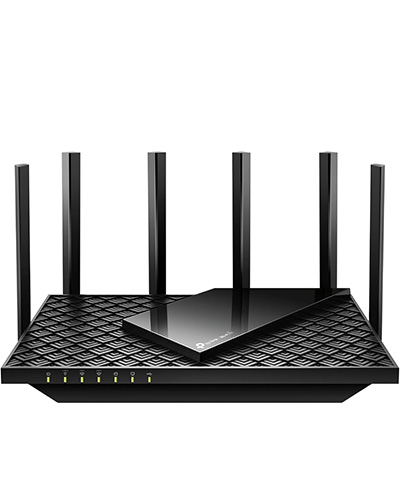
Best value
The Archer AXE75 isn't the fastest Wi-Fi 6E router you can get, but it has plenty of speed for most people with up to a gigabit internet connection. At a price that starts at under $200, TP-Link's router is the cheapest way to get Wi-FI 6E in your home.
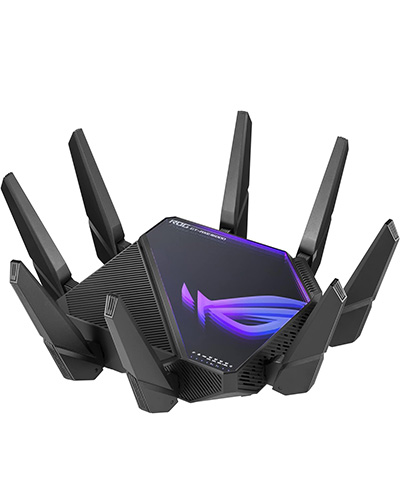
Upgrade pick
The ROG Rapture GT-AXE16000 from ASUS is one of the fastest routers in the world thanks to its quad-band Wi-Fi 6E connection that adds a fast 6GHz band without giving up any 5GHz speed. That means you get the best performance for your tech whether it's using the much more common 5GHz or the newer 6GHz tech.
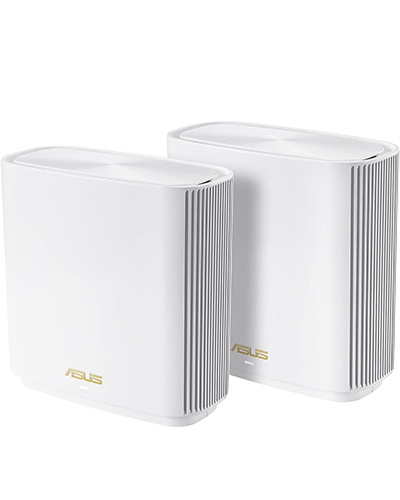
Best Wi-Fi 6E mesh system
The ZenWiFi ET8 is focused on the future with just enough power for Wi-Fi 6 and older devices and a ton of room for 6GHz devices. This mesh system uses the 6GHz band for its backhaul guaranteeing high speeds with minimal interference.

Best value mesh
The TP-Link Deco XE75 is one of the cheapest Wi-Fi 6E solutions on sale, with plenty of speed for gigabit internet connections. The 6GHz band can be used as a dedicated backhaul, or shared with devices as well.
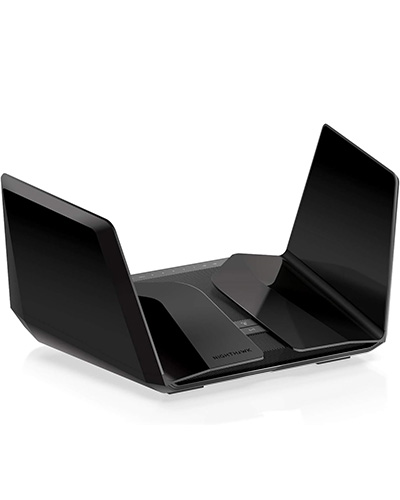
Standout design
The Netgear Nighthawk RAXE500 is one of the fastest Wi-Fi 6E routers you can buy with AXE11000 speeds and 12 streams. This router also has a great design with two matte black antenna wings on either end.
Load the next 2 products ↓
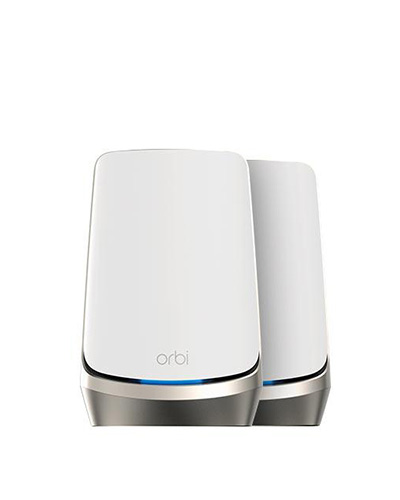
The ultimate mesh upgrade
The Orbi RBRE960 takes some of Netgear's best design and engineering works and scales it back to fit in a smaller home. It also makes it easy to expand into a mesh with an Orbi RBSE960 Satellite with no loss in speed thanks to a dedicated 5GHz mesh backhaul. Even a standalone Orbi has some of the best coverage in the business and the simple software makes it more accessible than a Nighthawk router.
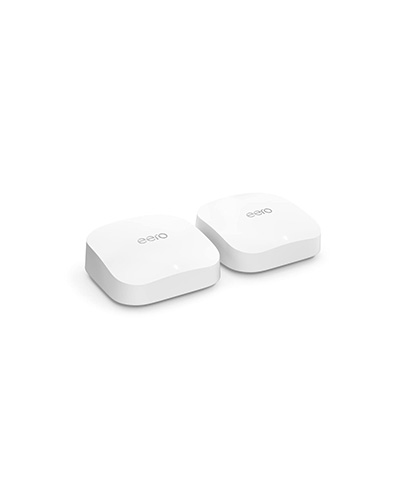
Best compact mesh
The eero Pro 6E isn't the most powerful Wi-Fi 6E router but with a compact footprint, access to eero's great app, and compatibility with other eero 6+ nodes, this is a great pick for somebody that wants a simple and fast Wi-Fi 6E network.
Best overall

Specifications
Reasons to buy
Reasons to avoid
The ROG Rapture GT-AXE11000 is one of the fastest routers ever made. While very fast AX11000 routers have come before it, it can deliver those speeds more consistently than before thanks to the vast spectrum available with Wi-Fi 6E. These speeds break down to 1,148Mbps at 2.4GHz and 4,804Mbps at 5GHz for Wi-Fi 6 and older devices. For 6GHz-capable devices, there are also 4,804Mbps available. Furthermore, this router can use 160MHz on both the 5GHz band and 6GHz band, meaning that you'll get amazing speeds even on older devices.
There are six Ethernet ports on the back, including four gigabit LAN, one gigabit WAN, and a 2.5Gbps LAN port. This fast port is also prioritized for gaming. The Rapture fits right in with the rest of the ROG line, complete with customizable RGB lighting. While the RGB isn't compatible with Aura Sync, you can still reflect network status or CPU load if you wish.
The gaming design also made it into the software with optimizations to keep your games running smoothly with consistent pings, even with a loaded connection. Not only that, if you're playing one of the best Android games online, your connection will be optimized to find the shortest path to the server. Even if you're not a fan of the gaming aesthetic and don't plan on using the gaming software, this is one of the fastest routers anywhere.
Best value
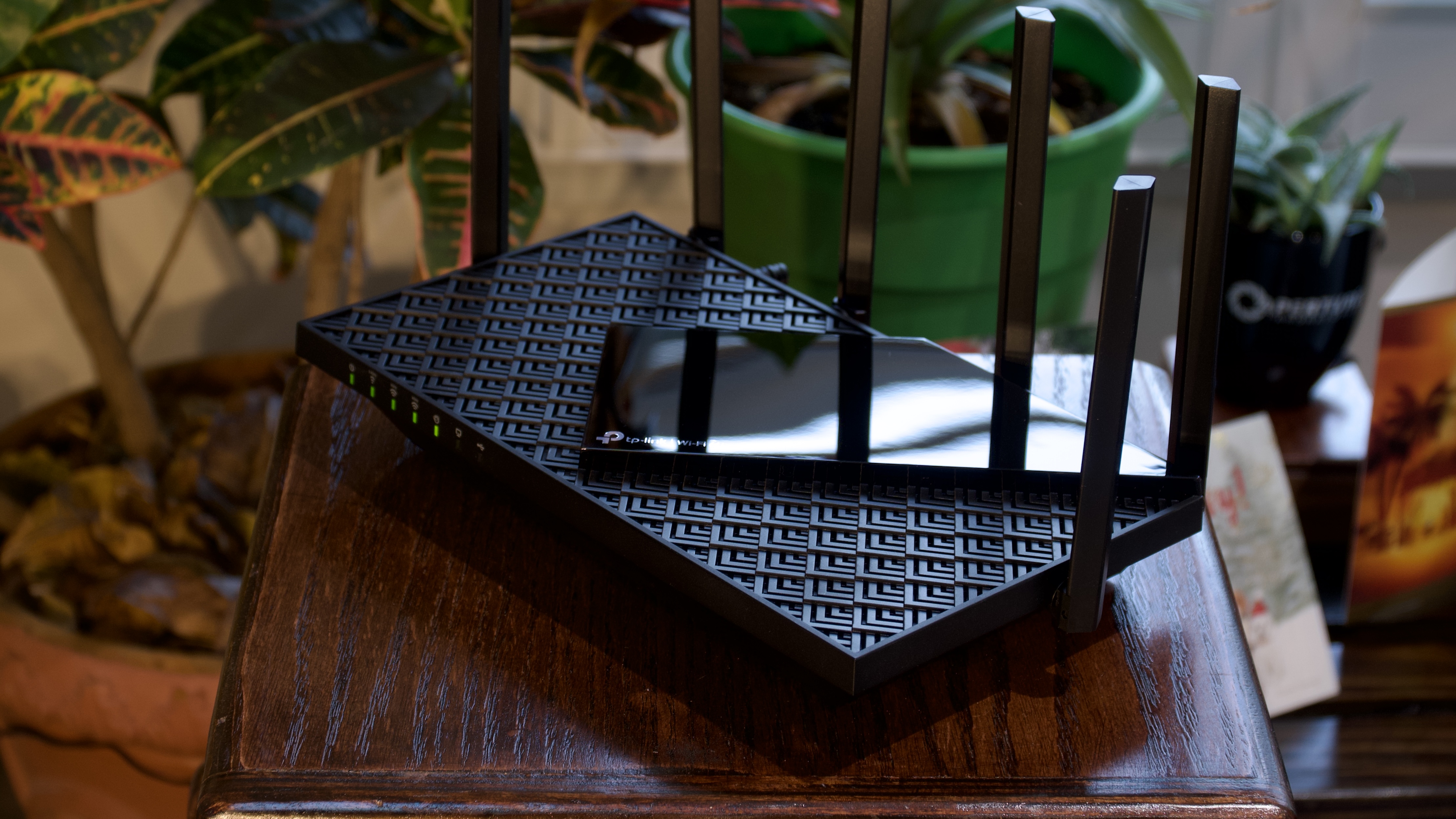
Specifications
Reasons to buy
Reasons to avoid
From the tech specs, the TP-Link Archer AXE75 looks very similar to the Deco XE75 mesh kit below. However, the Archer has a more traditional router layout with four gigabit Ethernet ports, a USB 3.0 port for storage, and six adjustable antennas. The AXE75 has a tri-band AXE5400 connection with 574Mbps possible at 2.4GHz, 2402Mbps at 5GHz, and 2402Mbps at 6GHz. As we saw in our Archer AXE75 review, the router delivers solid speeds at both 5GHz and 6GHz.
Unlike some other Wi-Fi 6E routers, TP-Link has kept the speeds between 5GHz and 6GHz the same. This, for many people, is a more sensible setup since the majority of Wi-Fi devices we already own only support 5GHz Wi-Fi. While most new Android devices and many gaming PCs have upgraded to Wi-Fi 6E, most people will be using 5GHz primarily for a few years.
TP-Link includes its HomeShield security software which comes with advanced security and parental controls available through TP-Link's router management app. You can unlock more features by subscribing to HomeShied Pro, but most people will be happy with the free package. Overall, the TP-Link Archer AXE75 is a good pick for internet connections up to 1Gbps and one of the most affordable ways to get up and running with Wi-Fi 6E.
Upgrade pick
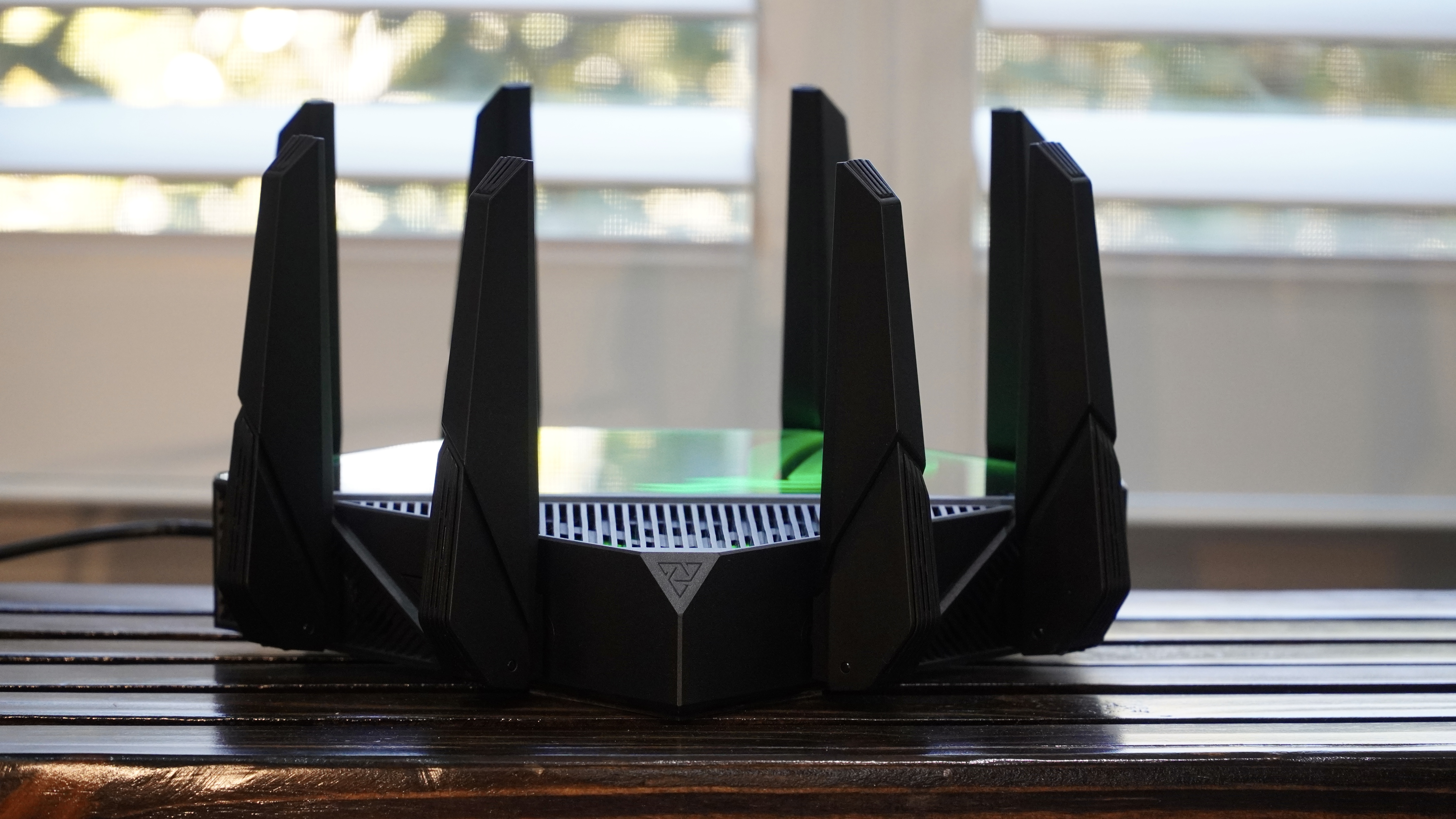
Specifications
Reasons to buy
Reasons to avoid
Wi-Fi routers have the pesky responsibility of being as backward compatible as possible, especially as many of our favorite devices start to age. Some homes also have more than 100 devices connected at all times using Wi-Fi 5 or older tech thanks to smart home products. That's why it makes sense for some heavier users to keep the speed and capacity of a tri-band Wi-Fi 6 router while adding more with 6GHz spectrum. This is how the ROG Rapture GT-AXE16000 became one of the faster home Wi-Fi routers in the world.
The ROG Rapture GT-AXE16000 is a quad-band router with a single 2.4GHz band, two 5GHz bands, and a 6GHz band. All bands are running at their best possible speeds to reach this number. It's essentially an AX11000 router with a 4804Mbps 6GHz band on top. It's easy to think that these ultra-fast routers are getting out of hand, but ASUS has kept its eye on the ball and upgraded the wired connectivity to make the GT-AXE16000 the ultimate multi-gig home router.
It has two Ethernet ports running at 10Gbps, and another 2.5Gbps port for your incoming internet connection. You could even use one of the 10GbE ports for your incoming connection if you have a 10GbE wired network already set up.
This router is targeted at those that like to have the very best of everything. Luckily for these people, as I saw in my ROG Rapture GT-AXE16000 review, ASUS has some of the best software features in the business with AiProtection, making it easy to add parental controls to your kids' devices and a QoS that can keep data flowing to your devices whether you're working from home or launching a competitive video game to help unwind. Anyone that plays an online game, like Valorant, Apex Legends, or Halo Infinite can tell you that lag can make or break your game.
While you can't control a game's servers, you can control your home network, and the ROG Rapture GT-AXE16000 can help you shave off every unnecessary millisecond of latency without dropping a single frame in OBS.
Best mesh system
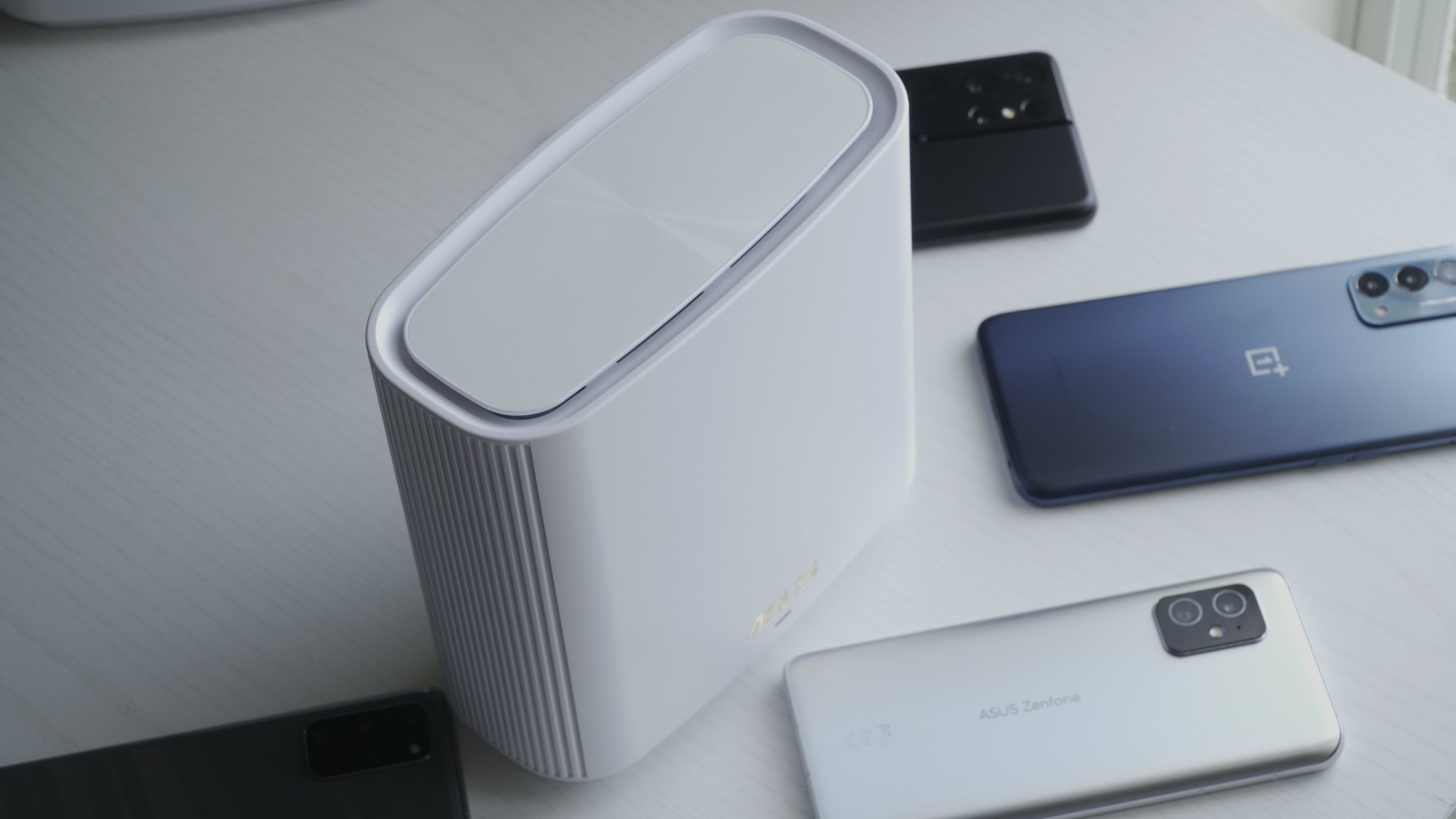
Specifications
Reasons to buy
Reasons to avoid
The ASUS ZenWiFi ET8 is a mesh Wi-Fi system with two nodes running at AXE6600 Wi-Fi 6E speeds. This speed breaks down to 574Mbps on the 2.4GHz band, 1,201Mbps at 5GHz, and 4,804Mbps at 6GHz. Most of the speed on this mesh kit is dedicated to the 6GHz band that most devices today cannot access. This makes sense for a mesh system since the wireless backhaul will use the 160MHz 6GHz band to link the nodes. Still, if you've invested in fast 160MHz Wi-Fi 5 or Wi-Fi 6 cards, you'll only be able to use them at up to 1201Mbps.
This system has two identical nodes with three gigabit Ethernet ports and a fast 2.5Gbps WAN port for the incoming connection. There is also a USB 3.1 Type-A port on the back. With these two nodes, you can cover up to 5,500 square feet, with expansion possible with more AiMesh nodes. AiMesh allows you to use a wide array of ASUS routers in a mesh and gives AiMesh users a serious advantage for future expansion.
ASUS also includes its powerful AiProtection Pro software package that includes antivirus protection, network security, and advanced parental controls for no extra cost. Speaking of ASUS' software, ASUS allows you to separate your Wi-Fi bands into different names to choose exactly which band you want a device to connect to, which is an uncommon but welcome option for mesh systems.
Best value mesh system
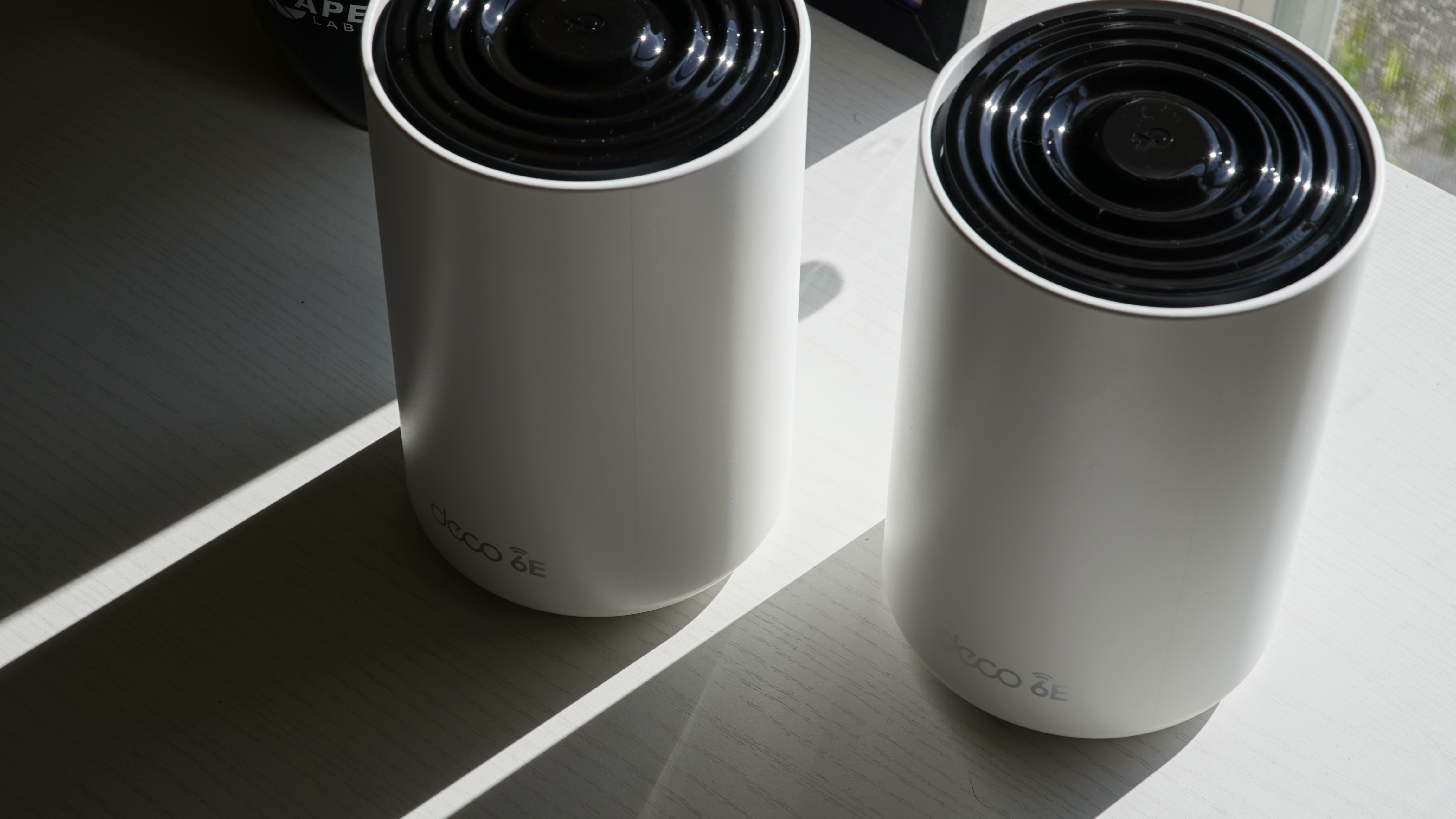
Specifications
Reasons to buy
Reasons to avoid
The TP-Link Deco XE75 is a competitively priced mesh solution even compared to systems with older tech. While there are faster mesh kits available, TP-Link has balanced the 5GHz and 6GHz bands to offer the same top speeds to older and newer devices so that both can access a full 2402Mbps Wi-Fi connection. The Deco XE75 has a tri-band AXE5400 connection that works out to 574Mbps at 2.4GHz, 2402Mbps at 5GHz, and 2402Mbps at 6GHz.
Our Deco XE75 review found that this kit uses the 6GHz band as a dedicated backhaul by default. This setup maximizes speeds for Wi-Fi 5 and Wi-Fi 6 devices, while still delivering high speeds on Wi-Fi 6E devices thanks to 160MHz support. You can elect to open the 6GHz band to devices if you have upgrades and are ready to take advantage of the new spectrum. While this will cut into your backhaul speeds a bit, there should be plenty of headroom to keep speeds high enough for up to a gigabit connection.
Speaking of gigabit, these nodes only have gigabit Ethernet ports. While this will be adequate for the vast majority of users, it's worth keeping in mind that this mesh is not ready for an internet connection over 1Gbps. While these connections are still only available to a relatively small number of customers, some ISPs like AT&T and Xfinity have started to offer these faster connections.
Standout design
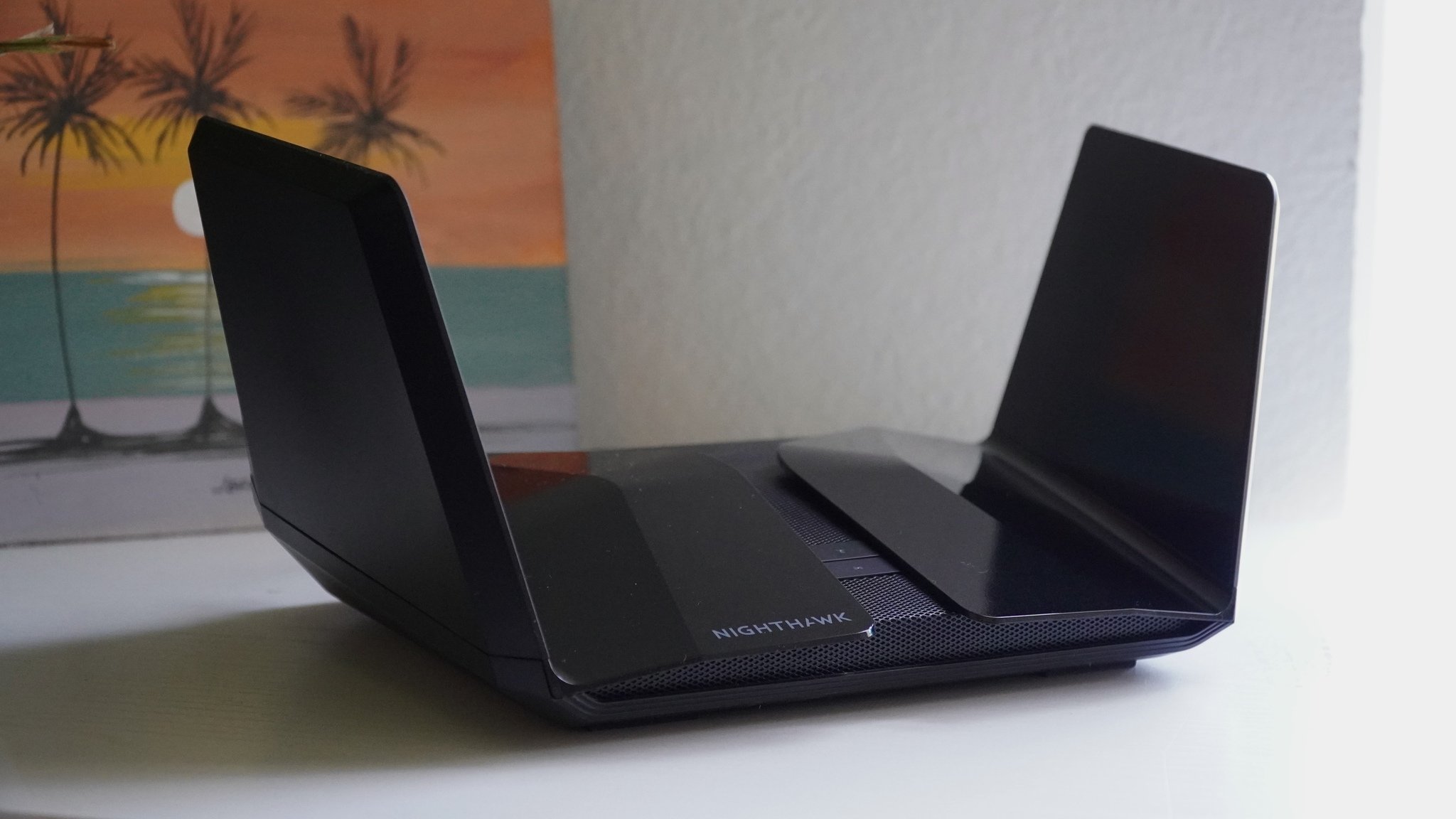
Specifications
Reasons to buy
Reasons to avoid
The Netgear Nighthawk RAXE500 is a high-speed router and even matches the top speed of the ROG Rapture GT-AXE11000. This AXE11000 connection breaks down to 1.2Gbps at 2.4GHz and 4.8Gbps on both the 5GHz and 6GHz devices. This leaves equivalent hardware to an AX6000 Wi-FI 6 router just for older devices. 160MHz bands are supported on both the 5GHz and 6GHz bands. There is a very similar RAXE450 router sold at some retailers that drops a bit of speed, offering only 256QAM instead of 1024QAM on the RAXE500.
This router looks identical to Netgear's other flagship Wi-Fi 6 routers with a matte black housing and antennas in the wings on the left and right sides of the device. This is a good thing as these routers have great coverage and look cool. There are six Ethernet ports, including a gigabit WAN port, four gigabit LAN ports, and a 2.5Gbps WAN/LAN port. This is great if you're connecting to a multi-gig wired network or want to connect a gaming PC with zero compromises.
Ultimate Wi-Fi 6E mesh upgrade
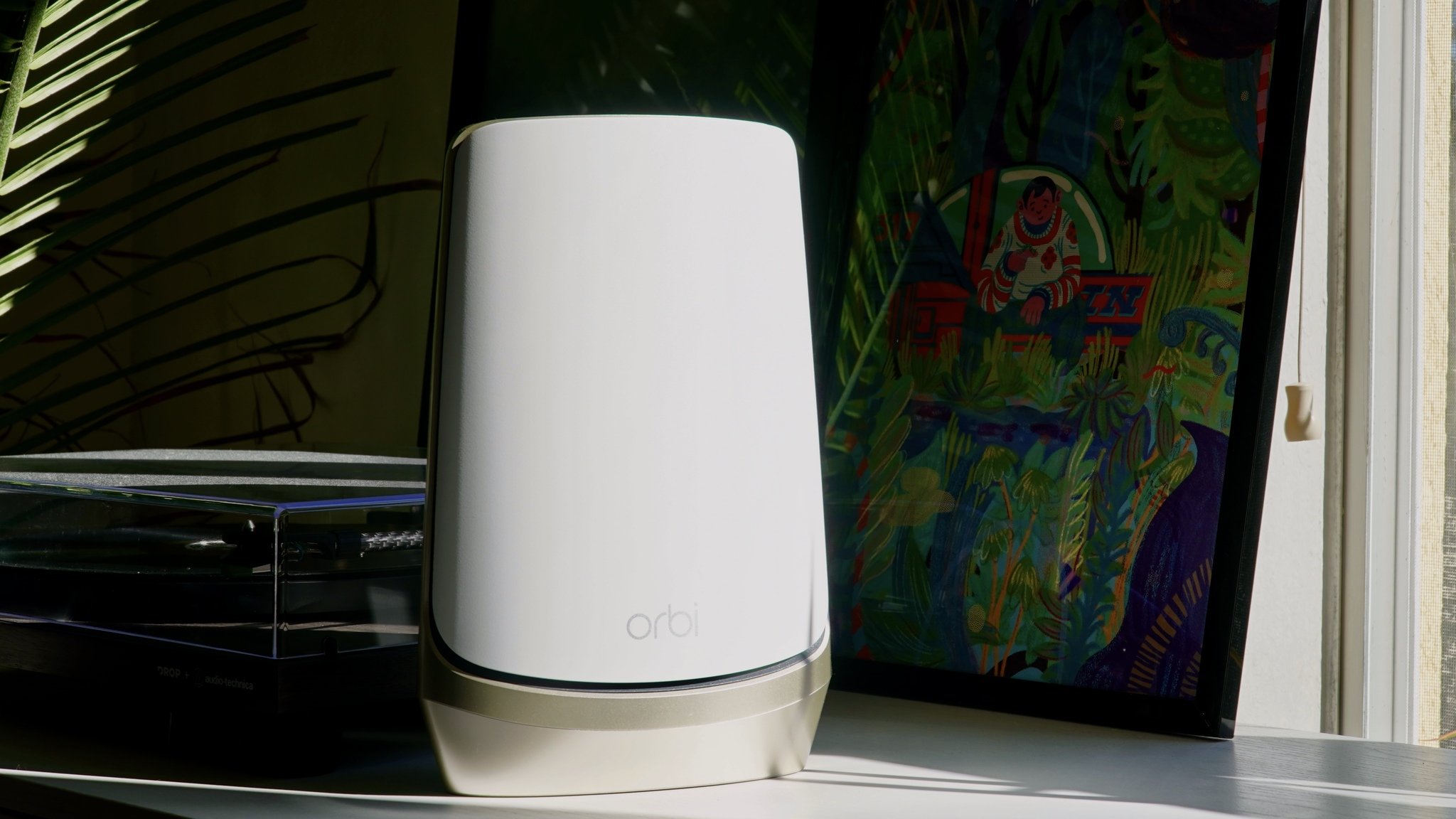
Specifications
Reasons to buy
Reasons to avoid
When I first heard about Netgear's Wi-Fi 6E Orbi, I was unsure about the choice to use 5GHz for backhaul. It quickly came to make sense as we made our way through more Wi-Fi 6E reviews at Android Central and discovered just how fickle a friend a 6GHz backhaul could be. The problem is that 6GHz Wi-Fi, for all its speed advantages, simply can't match 5GHz when it comes to coverage. Netgear has, as with most Orbi systems, chosen stability over speed with the Orbi RBRE960, and as I experienced in my review of the Orbi RBKE963, the mesh kit based on this router, it was a logical choice.
All of that only matters if you use the RBRE960 to build a mesh which is entirely optional. On its own, you get a very fast Wi-Fi 6E router with a simple setup process and great coverage. Orbi's rather tall and rather wide design gives its antennas plenty of room to shine without looking ungainly or falling for the gamer aesthetic. This is the sort of router I'd be happy to have in full view in my living room.
Around the back, you get a 10Gbps Ethernet port for incoming connections as well as a 2.5Gbps port for a fast LAN connection. If you have a fast 10Gbps wired network at home already, this router will be able to get connected at top speed. Orbi also one-ups the competition from eero Pro 6E and Nest Wifi Pro by allowing you to configure a separate 6GHz SSID so you can be sure your devices connect to the fastest possible band.
Best compact mesh system
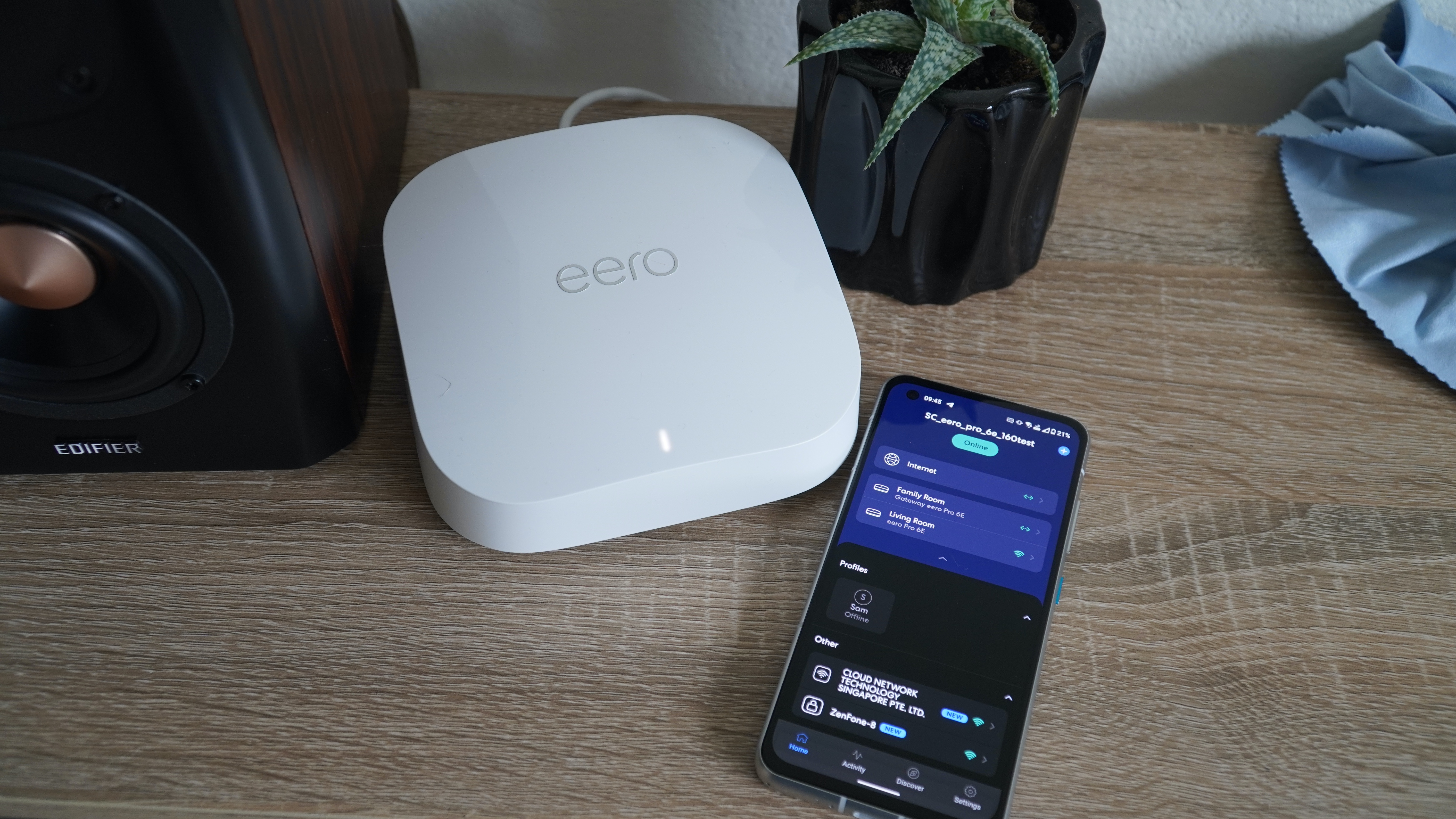
Specifications
Reasons to buy
Reasons to avoid
Let's get this out of the way: eero doesn't come out on top with a pure spec sheet showdown, and it never has. That hasn't stopped the Amazon-owned company from gaining a dedicated fanbase with consistent Wi-Fi performance that stays focused on stability, rather than chasing the fastest possible hardware. In fact, our eero Pro 6E review found that Wi-Fi 6E devices often ended up being placed on 5GHz, rather than 6GHz.
This tri-band mesh kit is available with one or two identical nodes in the box, with singles available later. The speed comes in at AXE5400, which breaks down to 574Mbps at 2.4GHZ, 2402Mbps at 5GHz, and 2402Mbps at 6GHz. This allows for both 5GHz and 6GHz to connect at full speed and with 160MHz support on both bands; even older 160MHz Wi-Fi 6 devices can get a boost.
On the back, there's a single USB-C port used for power next to two Ethernet ports. One port is a 2.5Gb Ethernet port, which can be used WAN or LAN depending on what makes the most sense for your network. It's all set up with eero's app which keeps settings simple but gives you access to the most important things. One of eero's main strengths is its mesh expansion with any eero devices which now even includes Amazon Echo Dot speakers with an October 2022 firmware update.
Wi-Fi 6E router FAQ
Most of us don't really need Wi-Fi 6E just yet and would be better off choosing one of the best Wi-Fi 6 routers instead. However, if you find you're losing speed at a distance, a Wi-Fi 6 mesh router might be a better choice. Still, TP-Link's affordable Archer AXE75 puts Wi-Fi 6E in the reach of a lot of people with plenty of performance for up to gigabit internet connections.
The best Wi-Fi 6E router will deliver great 6GHz speeds while maintaining perfect compatibility with older Wi-Fi 6 and Wi-Fi 5 devices. The ASUS ROG Rapture GT-AXE11000 nails every aspect with full Wi-Fi 6 speeds at 2.4GHz and 5GHz. This router also lets you take things to the max with full 160Mz support at 5GHz and 6GHz.
1. Make sure you get speed where you need it
Upgrading your router doesn't mean the dozens of Wi-Fi devices you already have will suddenly get faster, and in some cases, getting the wrong router can even lead to lower speeds. As you can see with the Linksys Hydra Pro 6E, saving money can come at the expense of speed on the older 2.4GHz and 5GHz Wi-Fi bands. If you plan to upgrade all or most of your wireless devices in the next year or so, it can work out. But if you're connecting a lot of 5GHz devices to this router, you'll be getting similar speeds to an AX1800 router, with around 600Mbps at 2.4GHz and 1.2Gbps at 5GHz.
A faster AXE11000 or AXE15000 router will be able to deliver incredible 6GHz speeds without sacrificing anything on older devices. You'll pay a lot for the privilege, however.
2. Check the software package
It's easy to focus on specs and forget about one of the most important aspects of a router: the software. Your router's software will control which devices get served first, and play a huge role in your network's performance if you have many connections. ASUS and Netgear have great software control, and have been using it to dominate with Wi-Fi 6 routers. These routers also come with some security software built in, though ASUS' solution is free, whereas Netgear has an optional yearly subscription model.
3. Do you need the speed?
When it comes down to it, all of these routers are much faster than most people need. While an AXE6600 router can seem slow in this context, it will be a great fit for most people. That being said, someone looking to get a Wi-Fi 6E router now is passionate about technology and might find the trade-offs not worth it. Whichever router you choose, make sure you pick up some Wi-Fi 6E devices as soon as possible so you can make the most of it.
Be an expert in 5 minutes
Get the latest news from Android Central, your trusted companion in the world of Android
When Samuel is not writing about networking or 5G at Android Central, he spends most of his time researching computer components and obsessing over what CPU goes into the ultimate Windows 98 computer. It's the Pentium 3.

